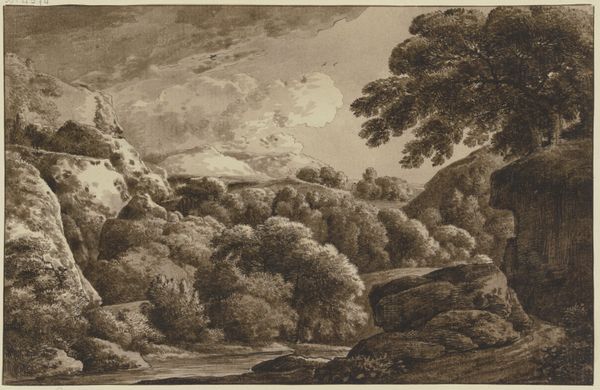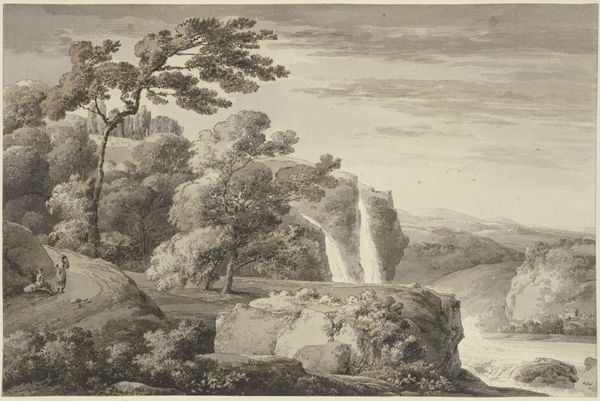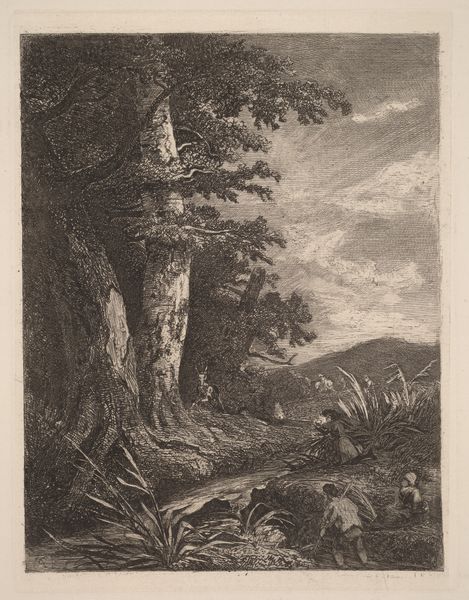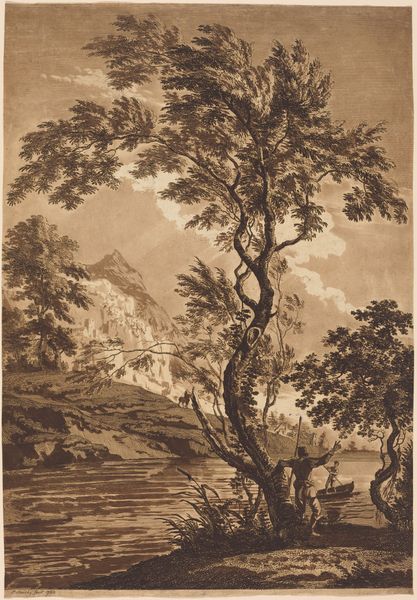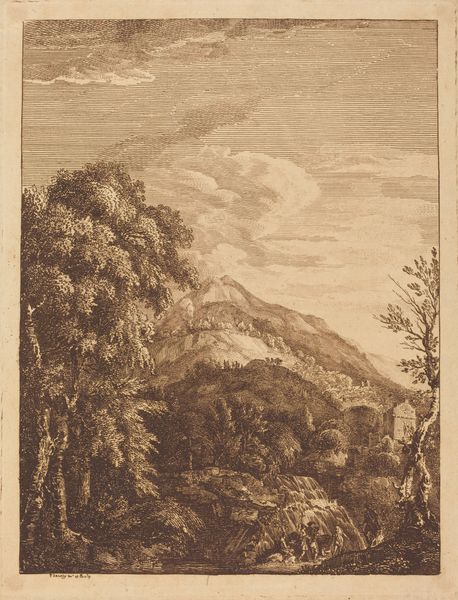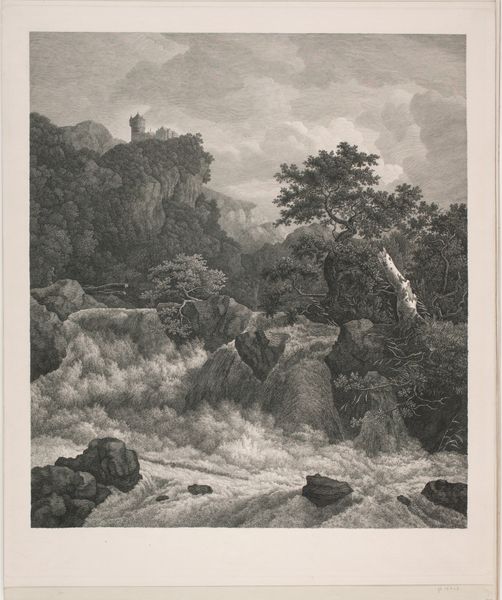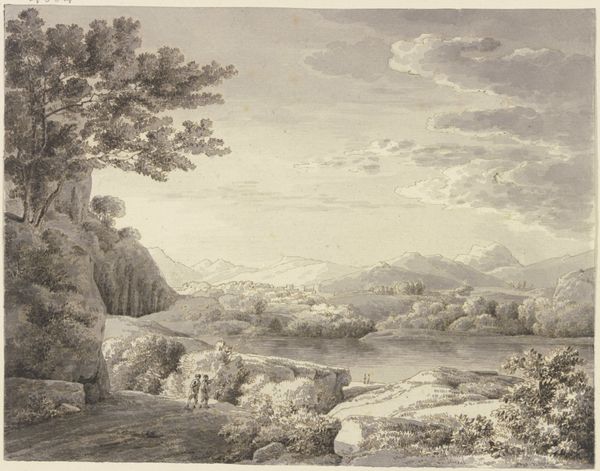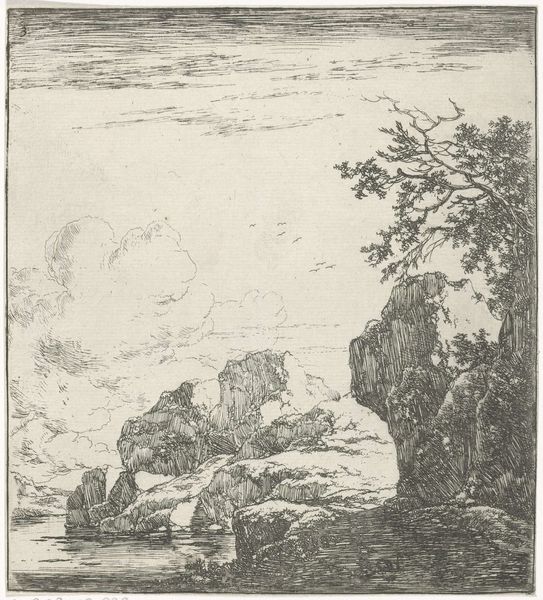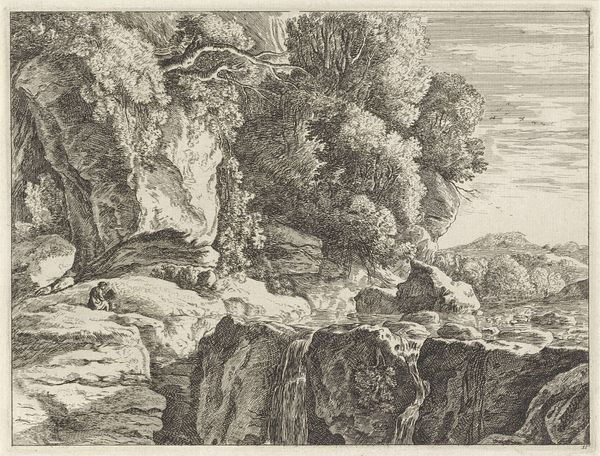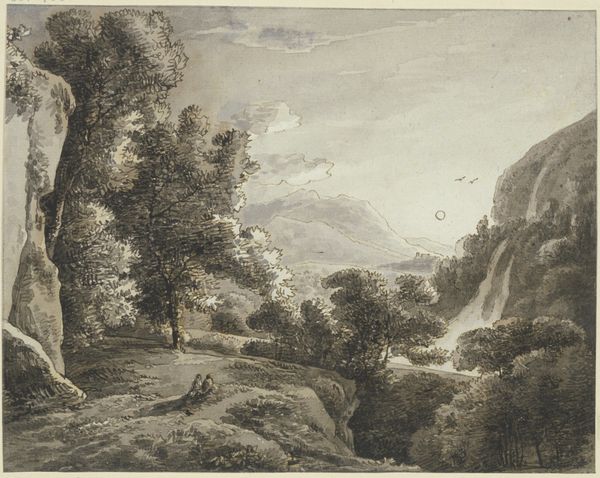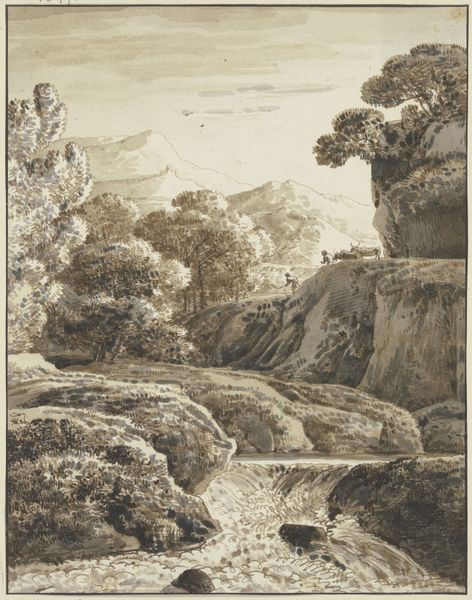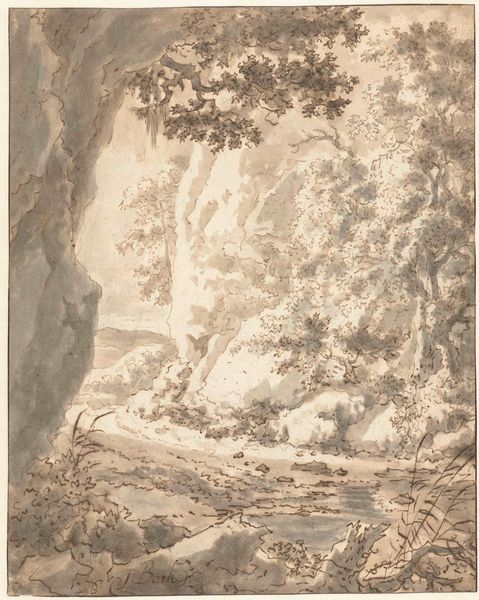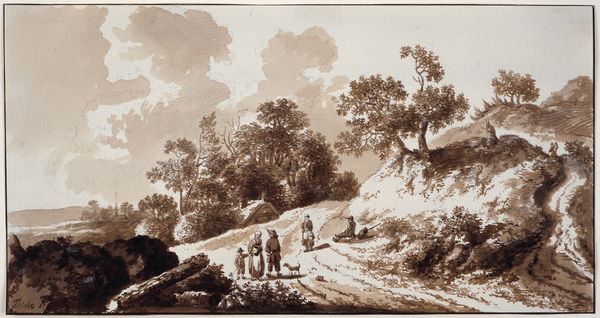
aquatint, print, etching, pencil, charcoal
#
aquatint
# print
#
etching
#
pencil sketch
#
landscape
#
charcoal drawing
#
oil painting
#
pencil drawing
#
pencil
#
charcoal
#
charcoal
#
graphite
Dimensions: 133 mm (height) x 84 mm (width) (bladmaal), 109 mm (height) x 70 mm (width) (billedmaal)
Heinrich Grosch made this landscape sometime in the late 18th or early 19th century, using a printing technique called chiaroscuro woodcut. This involves cutting a design into multiple wood blocks, each inked with a different tone, and then printed in succession to create an image with depth and shading. Look closely, and you can see the subtle variations in tone that give the scene its atmospheric quality. The process is labor intensive, requiring precise carving and registration of the blocks, and a deep understanding of tonal values. While woodcut was a relatively common printmaking method, chiaroscuro woodcut was considered a more refined, artistic endeavor. The choice of this technique elevates the landscape from a simple depiction to a carefully constructed artistic statement. Grosch's print sits at the intersection of craft and fine art, demonstrating how skilled techniques can imbue an image with social and cultural significance. Considering materials, making, and context helps us fully appreciate this artwork, moving beyond traditional distinctions.
Comments
No comments
Be the first to comment and join the conversation on the ultimate creative platform.
